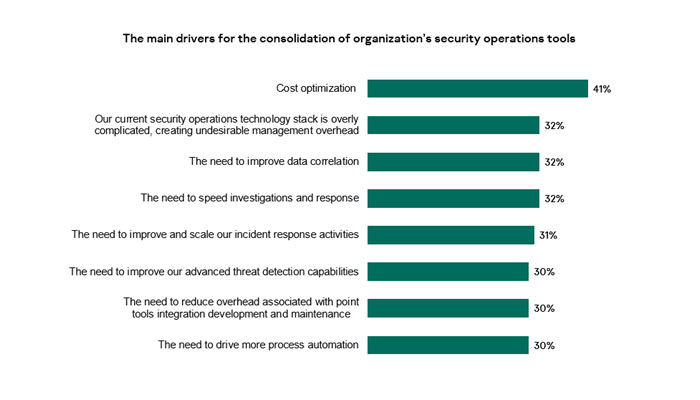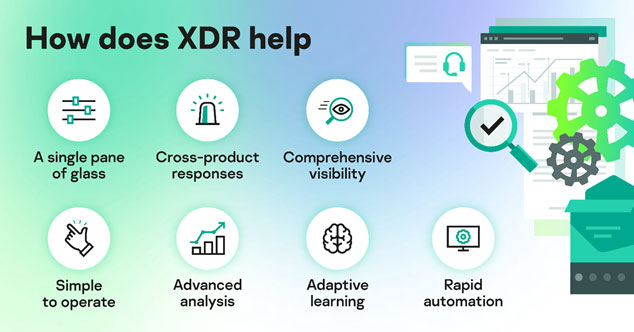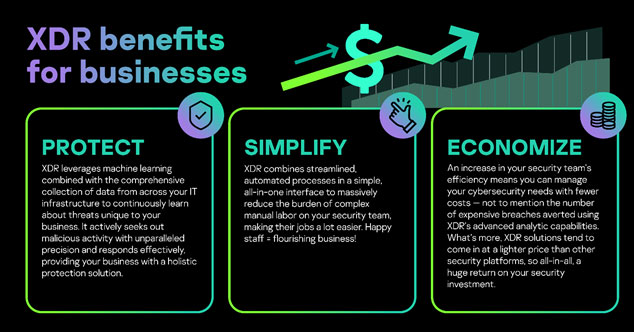The cybersecurity landscape rapidly evolving, as criminals are using ever more sophisticated methods to exploit network.
Security teams need to rely on deeper integration and more automation to stay ahead of cybercriminals
Ilya Markelov, Head of Unified Platform Product Line at Kaspersky
The cybersecurity landscape rapidly evolving, as criminals are using ever more sophisticated methods to exploit networks, digital assets and business functions moved to the cloud. Therefore, the reality is that detection and response are not always straightforward tasks – not only because disastrous breaches can come from anywhere at any time, but also because complex cybersecurity infrastructure creates an additional burden on IT Security teams that may possibly lead to human mistakes.
According to Enterprise Strategy Group’s XDR and SOC Modernization Report sponsored by Kaspersky, 66% of companies are actively consolidating the number of security operations tools and 32% are planning to consolidate them. Among main reasons they named cost optimization, complicated security operations technology stack that creates undesirable management overhead, the need to improve data correlations and speed investigations and response.[1]

The consolidation opportunity can be provided, for instance, by extended detection, and response (XDR) solutions. By proactively detecting complex threats across multiple infrastructure levels, XDR security can automatically respond to and counter advanced threats.
Greater integration and better capabilities
In the high-risk digital environment, it’s essential to have the necessary expertise to manage cyber threats coherently and holistically. Security teams need to rely on deeper integration and more automation to stay ahead of cybercriminals. By leveraging a range of data sources, including endpoint, network, and cloud data, XDR monitors and mitigates cybersecurity threats.
Providing a complete view of an organization’s security infrastructure, using advanced analytics, adaptive learning and automation capabilities, XDR can quickly identify and respond to potential threats, while easy deployment and management make it a convenient choice for busy IT teams.

Traditionally, companies have used endpoint detection and response (EDR) along with additional cybersecurity solutions controlling other assets for continuous threat detection and response. However, it is limited in that it is difficult to manage all these solutions simultaneously and effectively. Whereas EDR has rapid response capability, it can only focus on endpoints, while XDR, considering to be a more advanced version of EDR, focuses more broadly on multiple security control points to detect threats more quickly, using deep analytics and automation.
XDR unites and analyses the telemetry from these solutions in one place, a huge bonus for Infosec professionals requiring an automatically scalable solution that’s easily deployed with the ability to reduce the potential of false positive alerts, thus shortening response time. XDR seamlessly integrates with your existing security infrastructure, including endpoint protection platforms, FW/NGFW (Next-generation firewall) products, and other security tools. This integration maximizes your investment in security technologies, enabling centralized management, data correlation, and streamlined workflows.
The biggest benefit of XDR is also time as when it comes to cyber resilience, every second counts. By leveraging big data from across IT infrastructure, XDR uses advanced artificial intelligence and machine learning to simplify and facilitate timely analysis potential malicious activity with unparalleled accuracy and speed. By extracting only those elements needing to be analyzed for potential anomalies and threats, security teams can prioritize threat data by severity more quickly.
Greater economies of scale and efficiencies mean fewer cybersecurity costs as XDR solutions deliver more functionality, so IT teams can better use their time and budget to focus on key projects or customer experiences.

The benefit for large companies is that by taking an ecosystem approach, infosec managers can maximize the efficiency of the cybersecurity tools involved, save resources, and reduce risks as – with human factor, low scores, and a reduced number of false positives – investigation and response activities can take place from a single center, comprising relevant data, context, and tools.
Conclusion
Cyber breaches have the potential to cause untold damage to any organization – start-ups, small enterprises, or long-established listed global corporations. Even if your infosec team or trusted IT security provider is well resourced but task-focused, and under pressure protecting the business, there’s every chance you can still fall victim to external attack.
Only by taking a more comprehensive proactive approach to sophisticated cyber threats with automated solutions such as Kaspersky XDR (available this autumn) can teams be more alert, and customer data be kept secure.
About Kaspersky
Kaspersky is a global cybersecurity and digital privacy company founded in 1997. Kaspersky’s deep threat intelligence and security expertise is constantly transforming into innovative solutions and services to protect businesses, critical infrastructure, governments and consumers around the globe. The company’s comprehensive security portfolio includes leading endpoint protection, specialized security products and services, as well as Cyber Immune solutions to fight sophisticated and evolving digital threats. Over 400 million users are protected by Kaspersky technologies and we help over 220,000 corporate clients protect what matters most to them. Learn more at www.kaspersky.com.
[1] Source: ESG Research Report, SOC Modernization and the Role of XDR, June 2022


